AIOps Platform
Predict and Detect Major Incidents, Automate Root Cause Analysis and Prevent Outages with AiseraGPT and Generative AI

AI for IT Operations (AIOps)
Aisera’s AI Copilot for AIOps detects and resolves major incidents and performance issues, even before they arise. Aisera’s AIOps platform analyzes incidents from ticketing platforms and telemetry data (MELT) from infrastructure, apps and services to identify root causes, all while reducing detection and resolution times.
With AiseraGPT and Generative AI, agents can also inquire and receive proactive notifications about the health status, issues, and root causes of infrastructure and apps using natural language.
Aisera’s AI Copilot is always on, ensuring continuous operations while preventing outages and revenue loss.
Industry Leader in AIOps
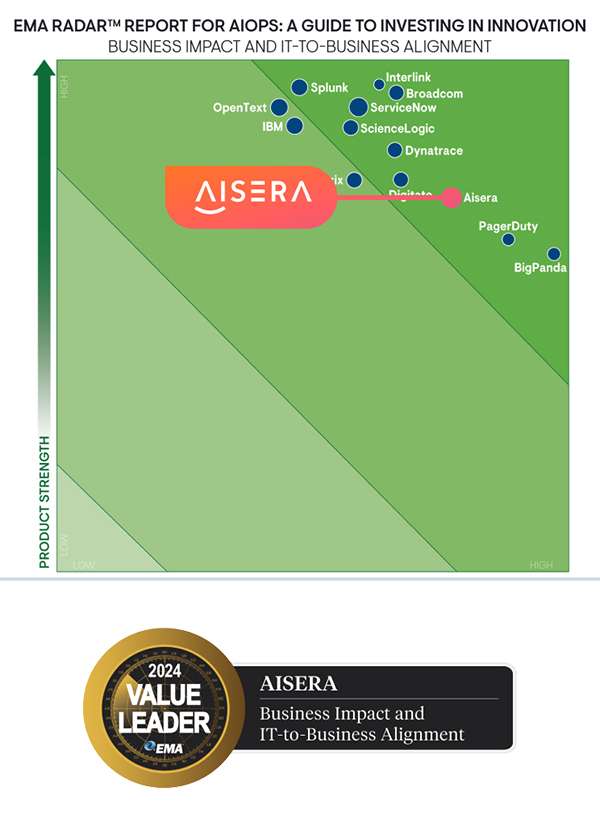
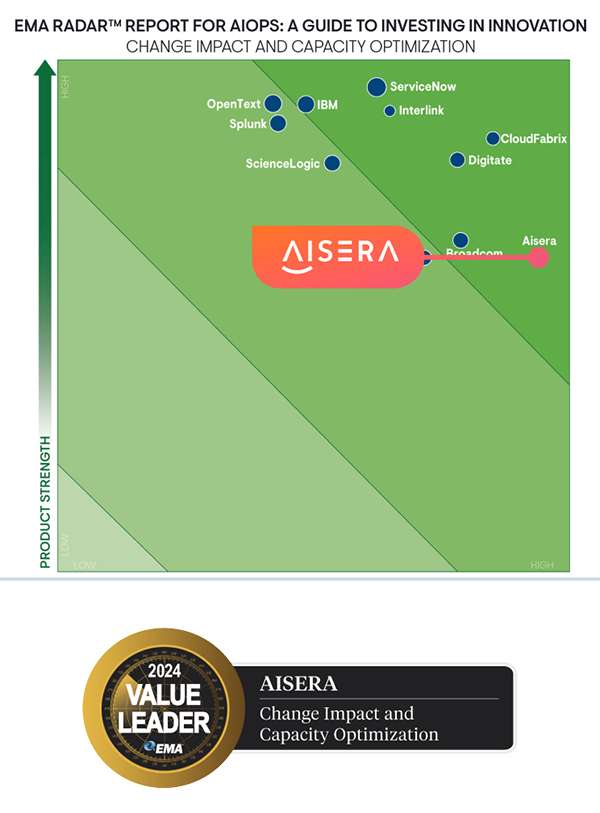
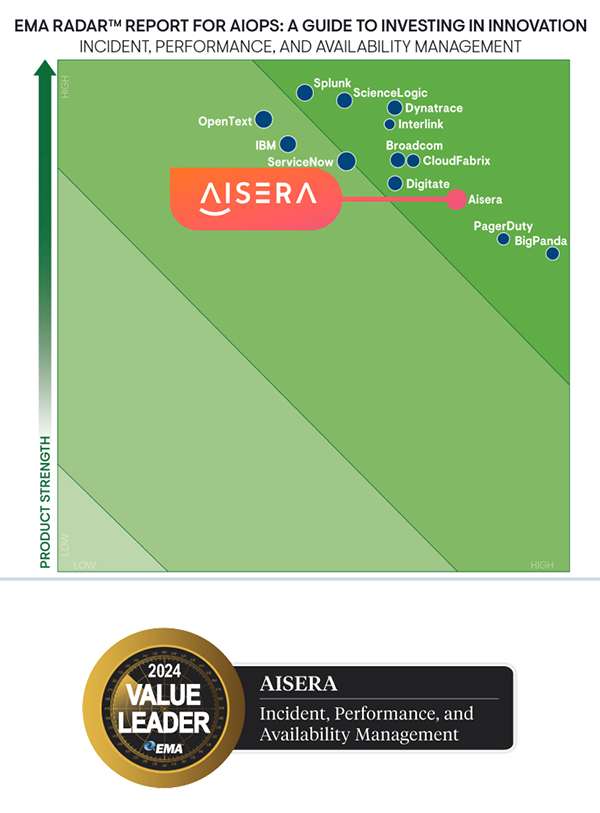
Trusted by Leading Companies








GPT-like Interactions with Generative AI
Convert cryptic and technical alerts, which require an expert to decipher and understand, into easily human-readable notifications with Aisera’s AI Copilot for AIOps. Driven by AiseraGPT and Generative AI, it facilitates human-like interactions to inquire about and notify issues regarding infrastructure and applications while offering unmatched automation, log summarization, insightful analytics, and auto-remediation capabilities for increased IT efficiency.
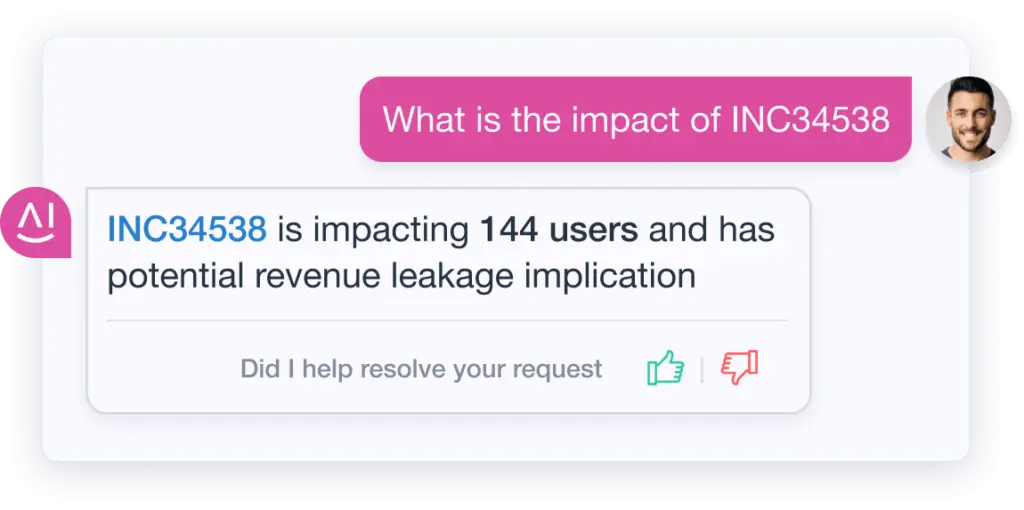
Major Incident Detection and Prediction
Using advanced noise suppression techniques and Spatiotemporal correlation techniques, Aisera’s AIOps uncovers the early formation of unique situations (anomaly detection) likely to lead to performance degradation and outage of business-critical services.
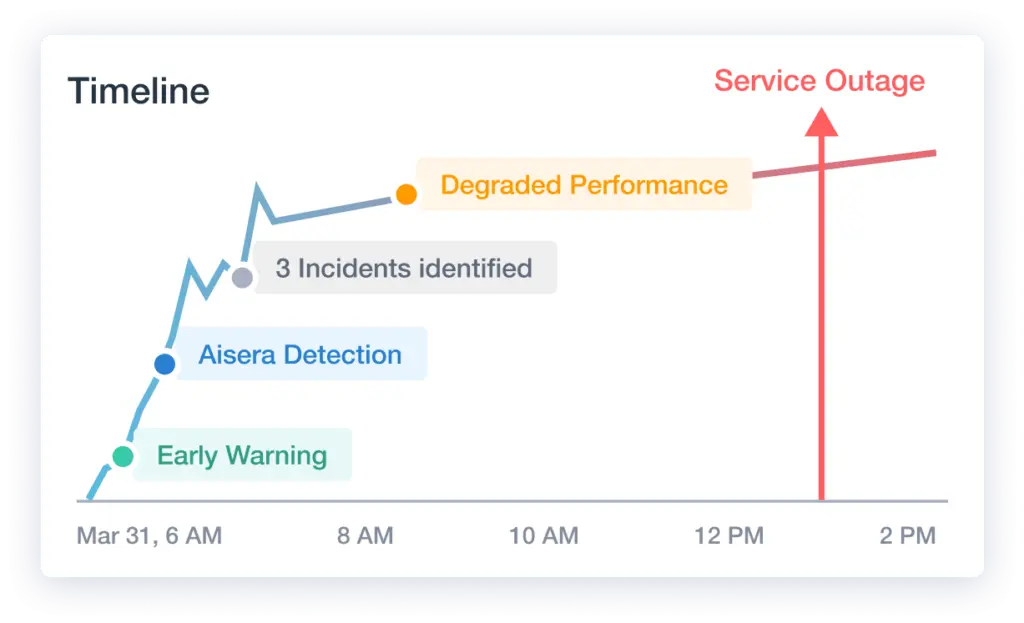
Automated AI Discovery
Aisera’s AIOps features AI-driven discovery that finds applications, devices, and cloud resources on your network to provide continuous visibility into the data center and cloud assets using ITSM and monitoring data.
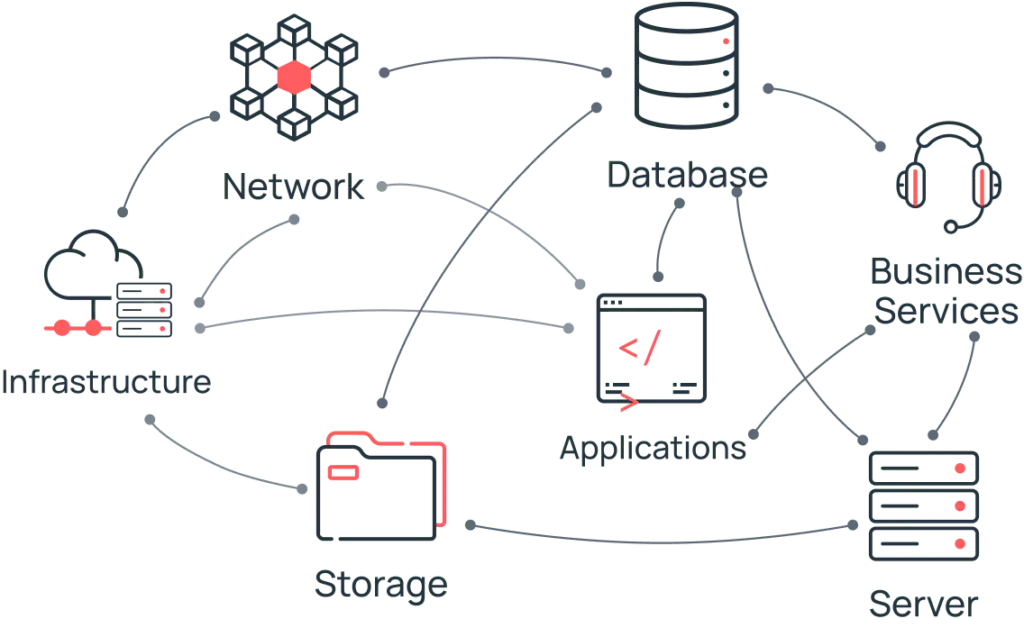
Dynamic CMDB
Aisera’s AIOps leverages change requests, incident tickets, and alerts data to discover enterprise configuration items (both on-prem and cloud) and reconstruct an accurate service topology by exploiting their metadata to keep them current.
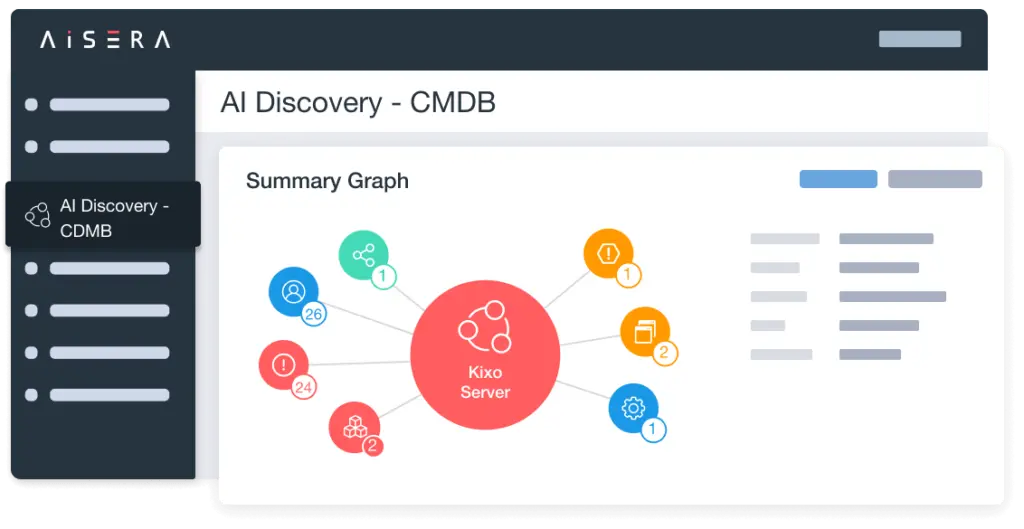
Automated Root-Cause Analysis
Precisely analyze data to pinpoint the configuration item(s) which caused each major incident based on the discovered symptoms and similar past major incidents with Aisera’s AIOps Platform.
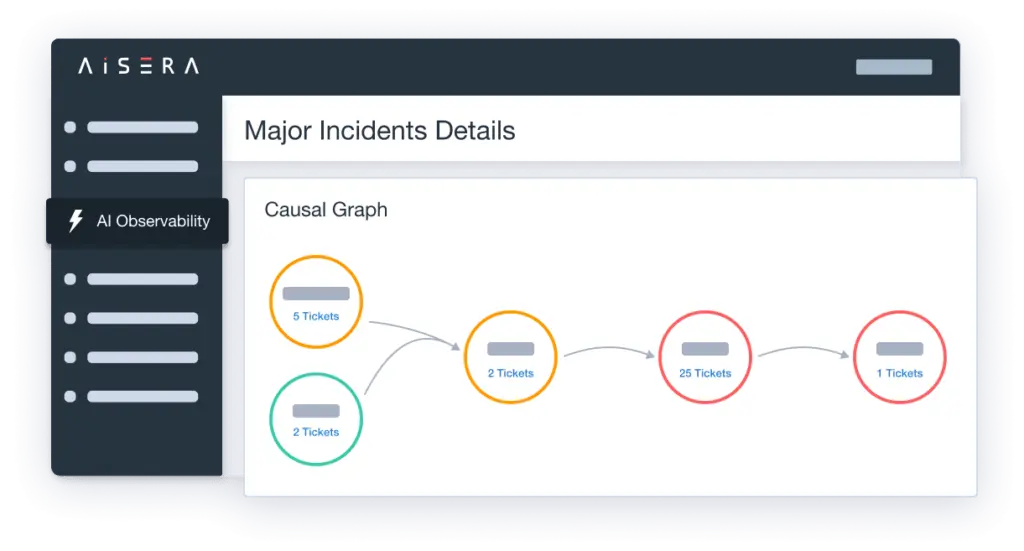
CI and MI Connectivity Graph
Aisera AIOps’s connectivity graph offers actionable insights into how incidents and alerts are impacting users, up/downstream systems, and business applications.
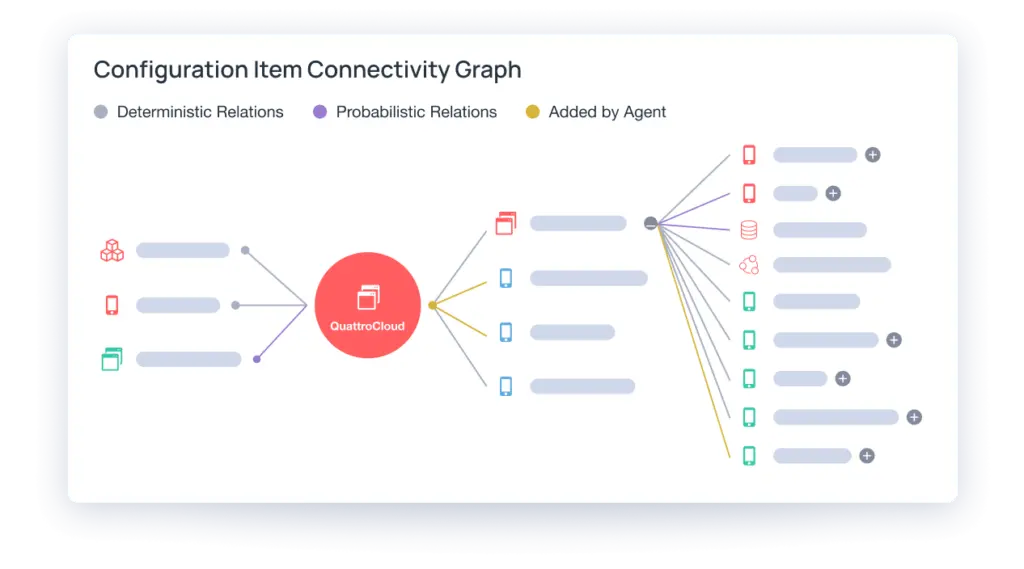
AIOps Products
AIOps FAQs
What is meant by AIOps?
What are the 4 key stages of AIOps?
- Data collection and model training
- Automated detection and triage
- Automated Response and Remediation
- Continuous Learning and Improvement
What problems does AIOps platform solve?
- Maintains a healthy CMDB
- Discoverability. Discover your on-premise or IT cloud assets without compromising security
- Outage Insights. Detect application performance issues before your customers
- Intelligent Alerts. Get early warnings about potential major incidents before they turn into outages
- Blind Spots. Correlate signals across your tech stack to avoid blind spots
- Impact and Root Cause Analysis. Reduce Mean Time to Detection by automating root cause analysis
- AI Workflow Actions: Identify the impact and urgency of an incident and triage accordingly
- Major Incident Clustering. Incrementally and continuously learns from new data and from user feedback.
